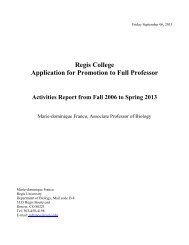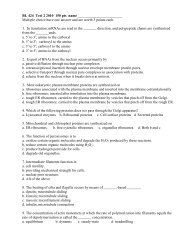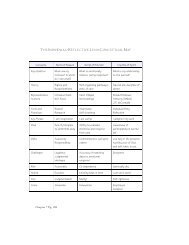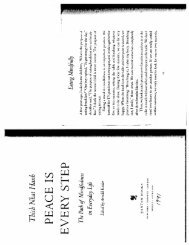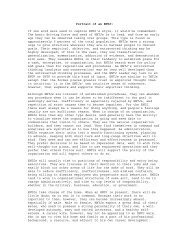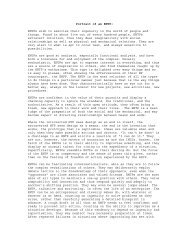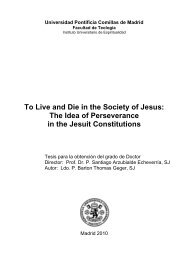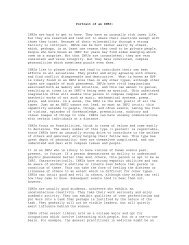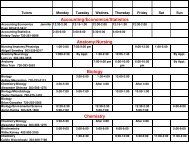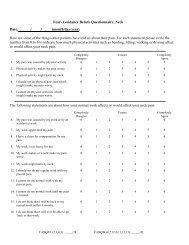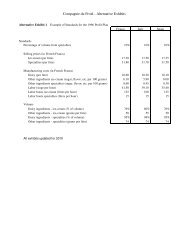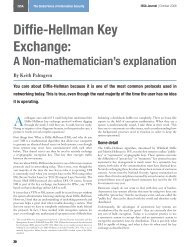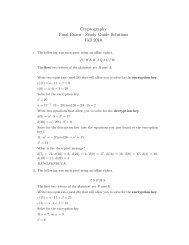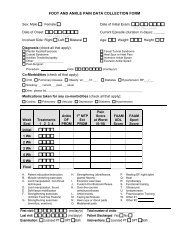Moral Norms (PDF) - Regis
Moral Norms (PDF) - Regis
Moral Norms (PDF) - Regis
Create successful ePaper yourself
Turn your PDF publications into a flip-book with our unique Google optimized e-Paper software.
MORAL<br />
NORMS
Preliminary Matters:<br />
<strong>Moral</strong> <strong>Norms</strong><br />
What are moral norms?<br />
What purposes do they serve?<br />
What are the sources of authority of norms?<br />
3
Origins of the Word “Norm”<br />
Etyonym<br />
Latin norma<br />
- a carpenter’s square for<br />
measuring right angles<br />
- a pattern, rule, standard.<br />
Latin normalis<br />
- made according to a square<br />
- right, regular<br />
5
What is a <strong>Moral</strong> Norm?<br />
A moral norm is an indication how humans<br />
ought to exercise their freedom.<br />
<strong>Moral</strong> norms point us toward achievable ideals<br />
Like the carpenter’s square, an ideal serves as a standard<br />
to measure what is actually done.<br />
Ideal Actual<br />
measures<br />
<strong>Moral</strong>ly normative ≠ normal or typical<br />
6
<strong>Moral</strong> <strong>Norms</strong> Have Different Forms<br />
* <strong>Moral</strong> norms can be expressed as rules, principles, dispositiions,<br />
character traits, and even through the life of the person. These are<br />
different ways of specifying criteria for moral judgments.<br />
* The life and person of Jesus Christ is the central and most complete<br />
Christian moral norm.<br />
3
The Form of a <strong>Moral</strong> Norm<br />
should fit what it measures.<br />
• Aristotle’s Flexible Leaden Ruler<br />
– A sense of equity (fairness) is needed to adjust laws to<br />
cases that don’t fit neatly into the intent of the law.<br />
– Aristotle compares this equity to the flexible leaden ruler<br />
used by builders in the Greek island of Lesbos. When<br />
building temples with heavy stones they would:<br />
• Start with a stone already in place<br />
• Take this flexible strip of lead metal and bend it to follow the<br />
irregular shape of this particular stone<br />
• Measure other potential stones to find the best fit<br />
6
The Form of a <strong>Moral</strong> Norm<br />
should fit what it measures.<br />
Example: Your mother has a heart attack. To save her life every<br />
second counts. You exceed the posted speed limit of 35 m.p.h. in<br />
Route to the hospital. Is it fair to hold you to the speed limit law?
A Fitting <strong>Moral</strong> Norm<br />
A rigid carpenter’s square is a poor instrument to measure the shape<br />
of a round stone. In contrast, a Lesbian ruler adjusts so as to conform<br />
to the uniqueness of the stone that it measures.<br />
A person who attempts to make every decision by an inflexible,<br />
rigid a priori principle (i.e. fully determined in advance), is<br />
like an architect who uses a straight edge to measure the<br />
intricate curves of a fluted column.<br />
He becomes legalistic.<br />
Prudent moral judgment requires norms that fit the circumstances<br />
that they measure.<br />
2
4 metaphors for <strong>Moral</strong> <strong>Norms</strong><br />
• Carpenter’s Square<br />
– <strong>Moral</strong> norms are like the carpenter’s square used to<br />
measure human freedom and construct morally good<br />
character and right actions. <strong>Moral</strong> norms are<br />
standards or criteria for judging and acting<br />
– PURPOSES<br />
QuickTime and a<br />
Photo - JPEG decompressor<br />
are needed to see this picture.<br />
a) Provide moral standards, criteria, or measures for<br />
judging.<br />
b) Guide conscience in making moral judgments.<br />
5
4 metaphors for <strong>Moral</strong> <strong>Norms</strong><br />
• <strong>Moral</strong> Road Signs<br />
– Guides to being and doing; indications or directions<br />
to types of actions that right v. wrong, obligatory v.<br />
permitted<br />
– PURPOSES<br />
QuickTime and a<br />
GIF decompressor<br />
are needed to see this picture.<br />
a) Preserve and protect moral goods and values by guiding<br />
us<br />
b) Focus our attention on what is morally important<br />
5
4 metaphors for <strong>Moral</strong> <strong>Norms</strong><br />
• A model for an art class<br />
– ideals indicating who we<br />
“ought” to become and<br />
what we ought to do<br />
-- Models and patterns<br />
for how to do so<br />
– PURPOSES<br />
QuickTime and a<br />
Photo - JPEG decompressor<br />
are needed to see this picture.<br />
a) Provide models to help us concretize our values and<br />
realize our ideals<br />
b) Prioritize our values and help us to fit them with our<br />
circumstances<br />
5
4 metaphors for <strong>Moral</strong> <strong>Norms</strong><br />
• An architect’s blueprints for a building<br />
– A set of instructions and expectations for the moral<br />
life<br />
– PURPOSES<br />
QuickTime and a<br />
Photo - JPEG decompressor<br />
are needed to see this picture.<br />
a) Teach moral wisdom of a community and serve as moral<br />
reminders of communal wisdom.<br />
b) Set moral expectations that shape how we see and act.<br />
5
The sources of Christian <strong>Moral</strong> <strong>Norms</strong><br />
• Scripture - ex. Thou shall not bear false witness against your<br />
neighbour. Love your enemies.<br />
• Reason (includes natural law) - ex. Self-preservation: it is reasonable to expect<br />
people to defend their lives when threatened.<br />
• Tradition - ex. Just War Doctrine<br />
• Experience - ex. Hiroshima and Nagasaki suggest that a nuclear war cannot target<br />
only combatants.
Three Main Types of <strong>Moral</strong> <strong>Norms</strong><br />
Material <strong>Norms</strong><br />
Formal <strong>Norms</strong><br />
Synthetic <strong>Norms</strong>
Material <strong>Norms</strong><br />
a) Specify the “matter” or means of specific actions<br />
b) Answer the question “WHAT should (or should<br />
not) be done?”<br />
c) Focus on DOING and tend to indicate actions<br />
d) Ex. Intentionally targeting and killing<br />
noncombatants is wrong<br />
4
Formal <strong>Norms</strong><br />
a) Specify the “form” of acting and especially the form of<br />
being<br />
b) Answer the question “HOW should (or shouldn’t) one<br />
act?” or “WHO should (or shouldn’t) one be?<br />
c) Focus more on BEING and tend to indicate character<br />
traits or dispositions<br />
d) Ex. Beatitudes: “Blessed are the peacemakers.”<br />
4
Synthetic <strong>Norms</strong><br />
a) Combine description of an action with moral evaluation<br />
of the action<br />
b) Combine description of WHAT is done with HOW it is<br />
done and/or WHY<br />
c) Focus on both<br />
d) Ex. “Thou shall not murder”<br />
4



